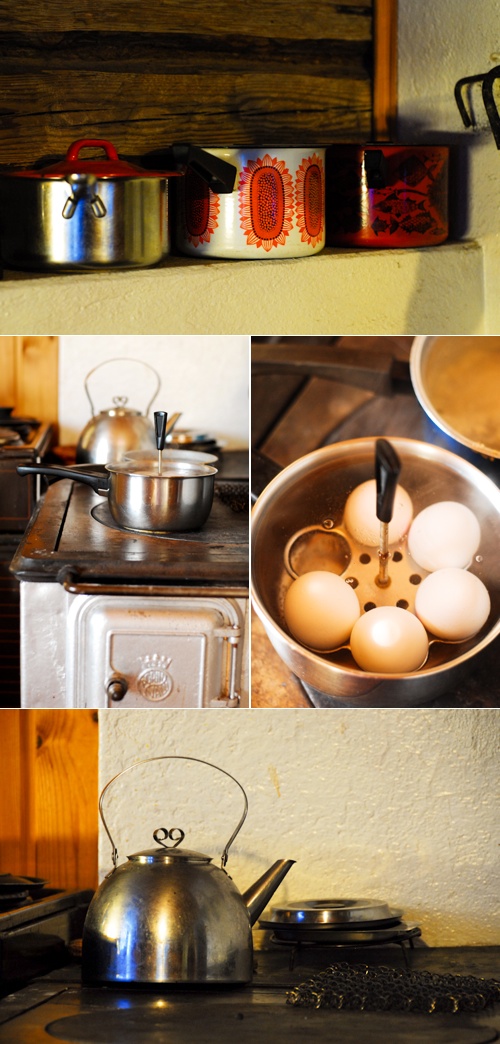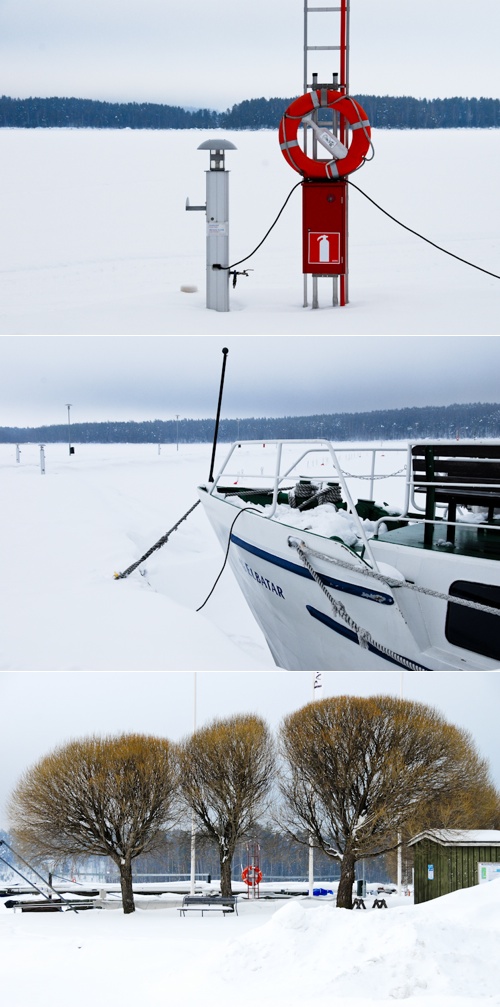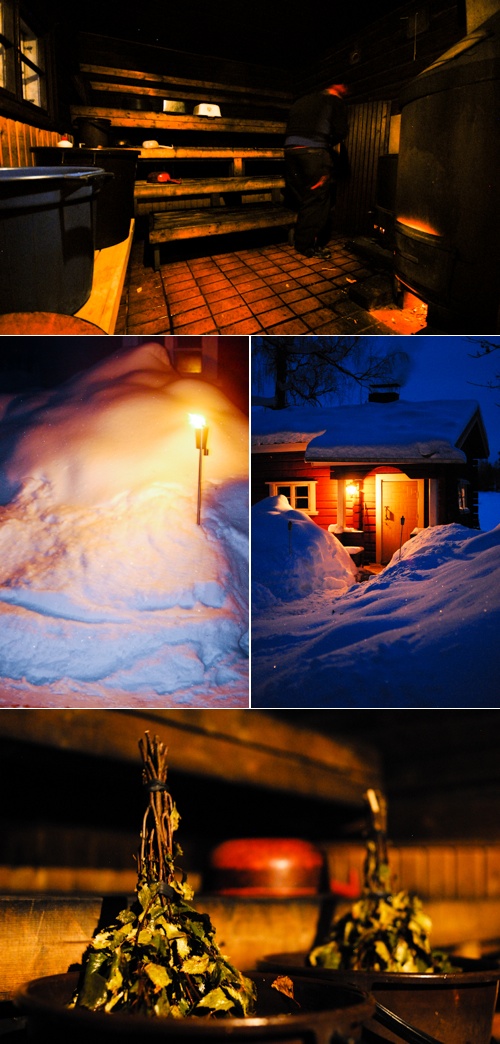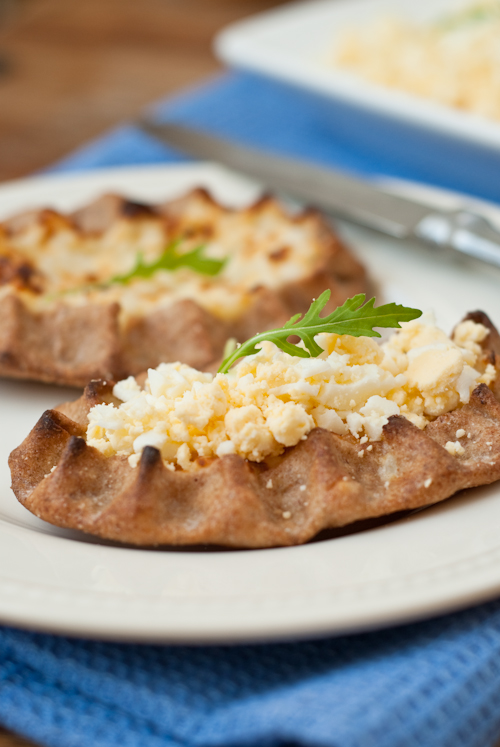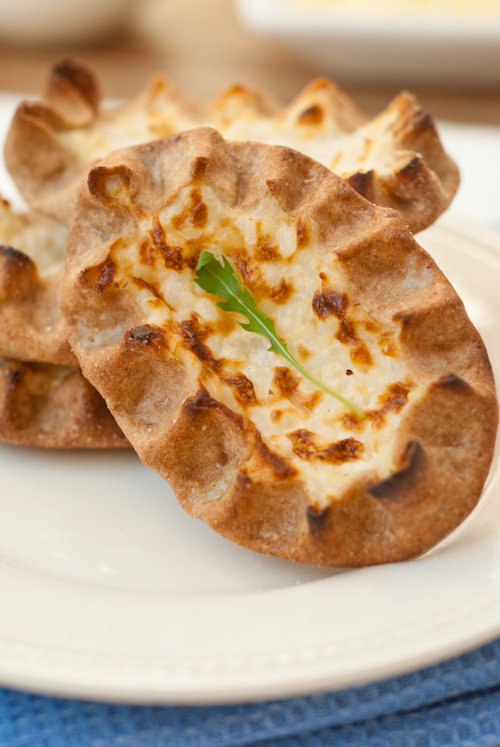
First of all I want to apologise for the long silence. I know it's been almost one month since I posted the last recipe. I am not sure if I have a good excuse for not updating the blog. However I'm back in full power now, and I have a special recipe for you today!
As you may know, I was on a holiday in Finland last week, and the recipe I'd like to share with you today is, surprisingly, related to Finland. Actually, the holiday itself, was highly related to Finnish cuisine. This way I want to express my huge thanks to our friends, who decided to brake with food tradition, in order to introduce some of the typical Finnish dishes to us.

P. and I are both big fans of scandinavian cuisine and of some of the Finnish goodies in particular. We return with a luggage full of all kinds of food and drinks every time we travel to Finland. Oh, how much a love a traditional rye bread. Actually, if I think about it, we return with a luggage full of local products every time we go on holiday, no matter where we travel. That's what I love about travelling. Isn't it just great to taste local goodies, bring some of your memories back home with you, and extend your holiday at least in a culinary way?
I can honestly say that I don't usually buy typical tourist souvenirs. I'm more than happy if I can visit a local market, and use all my luggage allowance to bring as much as I can! :) Call me crazy, but this is just the way I do it, and I love it! Besides, I really hate dusting, so I can't even think about any souvenirs that are merely dust catchers.
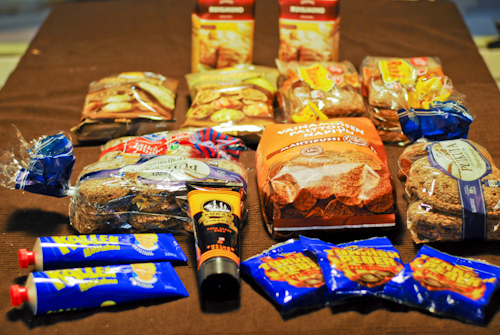

Our favourite treat we bring from Finland every time we travel there is Gin Long Drink. This very refreshing drink is a mixture of grapefruit lemonade and gin. Gin Long Drink, commonly called "lonkero" (=tentacle) was first introduce in 1952 when Finland was preparing for the Summer Olympics. Since then lonkero has become very popular. Gin Long Drink is produced by several companies. We tasted some of them, but the original drink from Hartwall remains our all time favourite for its specific taste, and it's also the best selling product in Alko stores. This fact is more than understandable when you imagine that Finns often enjoy their ice cold GLD before, during and after their sauna! Yes, we did it too! :)
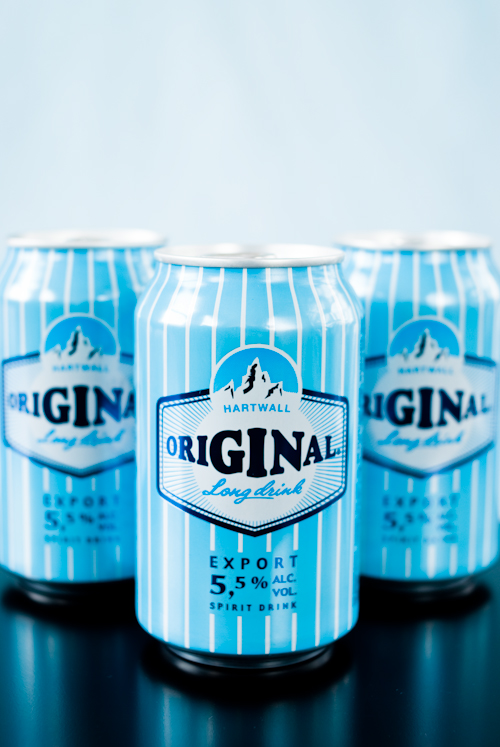
When speaking about traditions, I must not forget to mention Aku Ankka (Donald Duck), the trouserless duck in a sailor shirt and cap . This cartoon magazine has been published in Finland since 1951 and it has become one of the most read publications ever since. Aku Ankka is more popular in Finland than in the United States, the country of its origin, which is an interesting phenomenon. Subscription to Aku Ankka is almost a national tradition. It is widely read not only by children, but also by grown-ups.
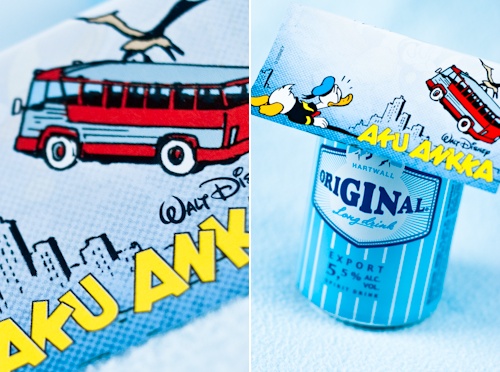
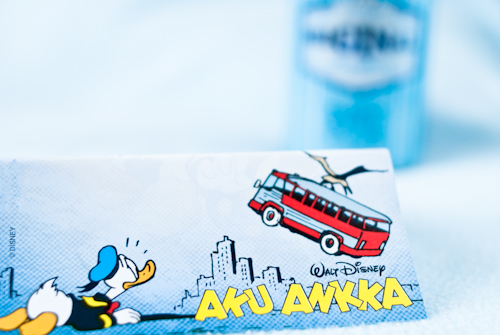
One of the main reason for Aku Ankka's popularity is its high quality of the educational and language aspect. The quality of its Finnish language is, without question, remarkably good. Thanks to the good and colourful language and the grammatical quality, the Aku Ankka can naturally only be understood by native speakers. We asked our friend to translate some words in a magazine, which we'd randomly picked only for its visual interestingness, and the answer was alway the same. It was quite difficult and tricky to translate. Many children learn to read thanks to the help of Aku Ankka. According to Sanoma Magazines (the comics' publisher) Aku Ankka now has about 1 million readers. Compare it to a population of 5.4 million and you get a huge success!
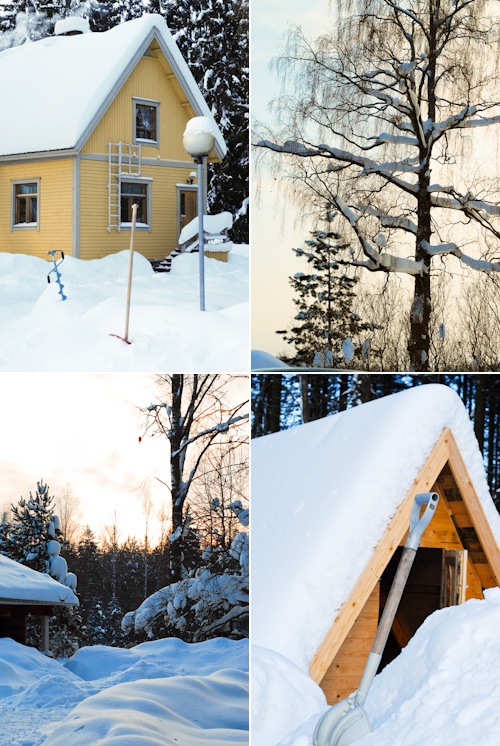
But let's get back to our holiday. We spent only 6 days in Finland but we had a blast. We were more than happy with the pleasing sunny weather and the average temperatures of -8C. This winter there is an exceptional amount of snow in Finland. That was like a dream for me, as I've never been to Finland during the winter, and I so much wished to experience a proper Finnish winter. My dream came true! There couldn't be a better way to enjoy this wonderful weather than going to a Finnish summer cottage with no running water. Only a well, a sauna and a dry toilet where available! We survived, and we would have stayed even longer if we could. Can you imagine what a modern technology detox it was? No computers, no internet... It was truly relaxing holiday.
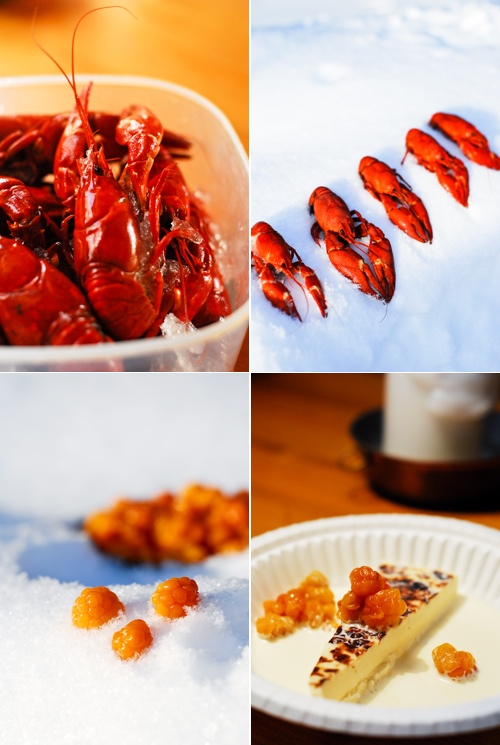
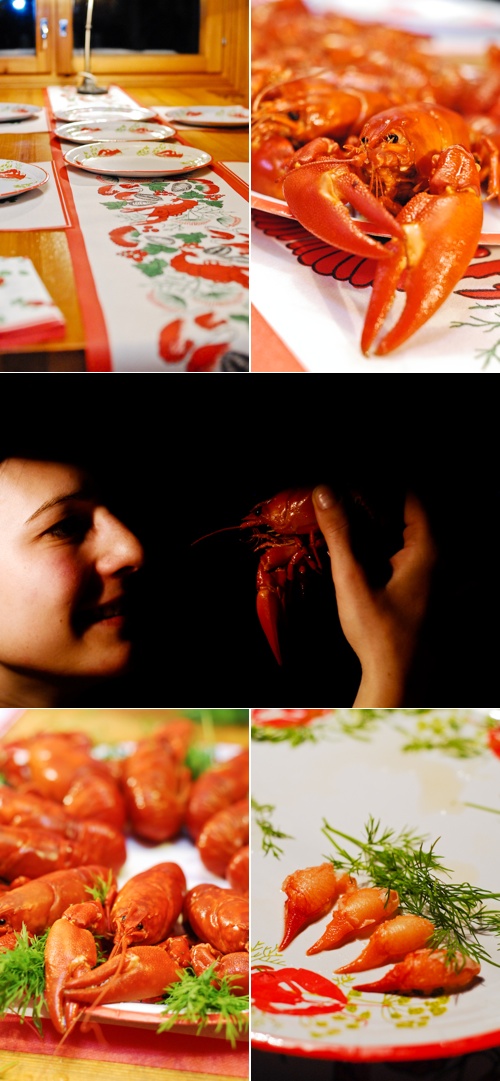




Our favourite treat we bring from Finland every time we travel there is Gin Long Drink. This very refreshing drink is a mixture of grapefruit lemonade and gin. Gin Long Drink, commonly called "lonkero" (=tentacle) was first introduce in 1952 when Finland was preparing for the Summer Olympics. Since then lonkero has become very popular. Gin Long Drink is produced by several companies. We tasted some of them, but the original drink from Hartwall remains our all time favourite for its specific taste, and it's also the best selling product in Alko stores. This fact is more than understandable when you imagine that Finns often enjoy their ice cold GLD before, during and after their sauna! Yes, we did it too! :)

When speaking about traditions, I must not forget to mention Aku Ankka (Donald Duck), the trouserless duck in a sailor shirt and cap . This cartoon magazine has been published in Finland since 1951 and it has become one of the most read publications ever since. Aku Ankka is more popular in Finland than in the United States, the country of its origin, which is an interesting phenomenon. Subscription to Aku Ankka is almost a national tradition. It is widely read not only by children, but also by grown-ups.


One of the main reason for Aku Ankka's popularity is its high quality of the educational and language aspect. The quality of its Finnish language is, without question, remarkably good. Thanks to the good and colourful language and the grammatical quality, the Aku Ankka can naturally only be understood by native speakers. We asked our friend to translate some words in a magazine, which we'd randomly picked only for its visual interestingness, and the answer was alway the same. It was quite difficult and tricky to translate. Many children learn to read thanks to the help of Aku Ankka. According to Sanoma Magazines (the comics' publisher) Aku Ankka now has about 1 million readers. Compare it to a population of 5.4 million and you get a huge success!

But let's get back to our holiday. We spent only 6 days in Finland but we had a blast. We were more than happy with the pleasing sunny weather and the average temperatures of -8C. This winter there is an exceptional amount of snow in Finland. That was like a dream for me, as I've never been to Finland during the winter, and I so much wished to experience a proper Finnish winter. My dream came true! There couldn't be a better way to enjoy this wonderful weather than going to a Finnish summer cottage with no running water. Only a well, a sauna and a dry toilet where available! We survived, and we would have stayed even longer if we could. Can you imagine what a modern technology detox it was? No computers, no internet... It was truly relaxing holiday.
It wouldn't be a proper holiday in Finland without a sauna. Saunas are an important part of Finnish culture. Did you know that in the old days, women usually gave birth in saunas? A sauna whisk called "vihta" is often used in traditional saunas. The whisk is made of a bunch of fresh birch twigs and is used for massage and stimulation of the skin. Dried vihta is revived by soaking in warm water, so you can enjoy it any time of the year. The Vihta also gives off a wonderful smell of birch inside the sauna. I love sauna and miss it so much in London.
I was talking about food traditions at the beginning of this post. Finnish cuisine is quite underestimated and not very well known. There is a strong emphasis on fresh local seasonal ingredients. This aspect of the cuisine won my admiration. Its importance is evident especially nowadays, when sustainable food and agriculture are widely discussed and promoted, and people around the world are inspired to eat local food and use local products.
I can say from my own experience that Finnish people really eat particular food only when it is in season. At least, our friends do. So don't try to eat pickled herrings with mustard in February if you don't won't to look like you've just are arrived from the Mars. And, especially don't eat the whole jar just with bread. Pickled herrings are typically only eaten at Christmas or at midsummer when new potatoes are in season. So you can imagine how weird a picture of crayfish on the snow looks like to Finns. Still don't know why?

Here's the story. Ask any Finn person when they usually eat crayfish. I bet you get an answer saying that crayfish are only eaten throughout August and September. It is time for the traditional crayfish party. The reason is quite simple. Crayfish harvest starts officially in the middle of July and finishes at the end of October. During this time, shops are full of table decorations like napkins, tablecloths and paper plates with crayfish pattern. Crayfish are cooked with dill and eaten with toasts. This is also the only occasion when eating loudly is tolerated as sucking is necessary to enjoy the juices inside the crayfish. A special crayfish knife is needed to open the crayfish. Short crayfish songs are usually sung and vodka or other alcohol are drunk.
We ate crayfish in February, and so did our friends, for the first time in their life! And they were absolutely divine! Most of Finns would probably think you are mad if you told them about this. It's all about traditions. Our friend's father caught and froze crayfish for us so we could enjoy these delicacies during very unusual time of the year.


And here comes the promised recipe. Karelian pies are traditional pasties from the Karelia region, the eastern parts of Finland. The thin rye crust is traditionally filled with rice porridge or mashed potatoes. Various fillings like carrot are also used nowadays. I fell in love with karelian pie the first time I'd tasted it. It's often eaten with egg-butter (munavoi) which is spread over the hot pie before eating.
This egg-butter is supposed to be eaten ONLY with karelian pies. So imagine our friends surprise and consternation when P. started to eat it on its own and then spread it on his toast! :) And imagine our surprise when one morning our finnish friend spread the egg-butter on his bread too, and a little one ate a spoonful with his porridge.
I was warned that making karelian pies take time to master, but I think I did quite well for the first time! I know, I still have to improve in an area of their look, but at least they tasted great.

Karelian Pies (Karjalanpiirakat)
Make about 20 pies
Ingredients
Rice filling:
4 dl (340g) short-grain (pudding) rice
2 l milk
500 ml water
1 tsp salt
2 tbsp butter
Dough:
4 dl (250g) rye flour
1 dl (55g) plain flour
1 tsp salt
200 ml water
Butter, for glazing
Egg-butter spread:
8 hard-boiled eggs
150 g salted butter
1. Bring water to a boil in a heavy-bottomed saucepan. Add the rice and cook over low heat until all the water is absorbed. Add the milk and bring again to a boil, stirring frequently. Reduce the heat to a very low and simmer for 30-40min, stirring occasionally, until the rice is cooked. Take the rice off the heat, stir in the butter and season the porridge with salt. Set aside to cool.
2. In a medium bowl, combine flours and salt and stir into cold water. Knead the dough until all ingredients come together and the dough is solid and even. Form the dough into a bar and divide it into 20 pieces. Roll the pieces into balls and flatten them with your hand. Sprinkle each piece with rye flour to prevent them sticking together and cover with a kitchen towel.
3. On a floured surface, roll the flattened pieces into thin and oval crusts. Try to roll them as thin as possible. Line the crusts up so they overlap and sprinkle some rye flour between them so they don't stick together. Cover the crusts with a kitchen towel to prevent them from becoming dry.
4. Fill each crust with the rice porridge. Place about a tablespoon or more of the rice filling on the crust and spread evenly to fit the shape of the pie. Fold the crust edges over the filling and pinch tightly with your fingers.
5. Places the pies on a baking tray lined with baking paper. Bake in preheated oven to 275-300C for 10-15 minutes, until golden brown.
6. Brush the baked pies with melted butter and cover them with baking sheet and kitchen towel to soften.
7. To make the egg-butter, mash the eggs and softened butter with a fork together, in a bowl, and place into the fridge to cool.

